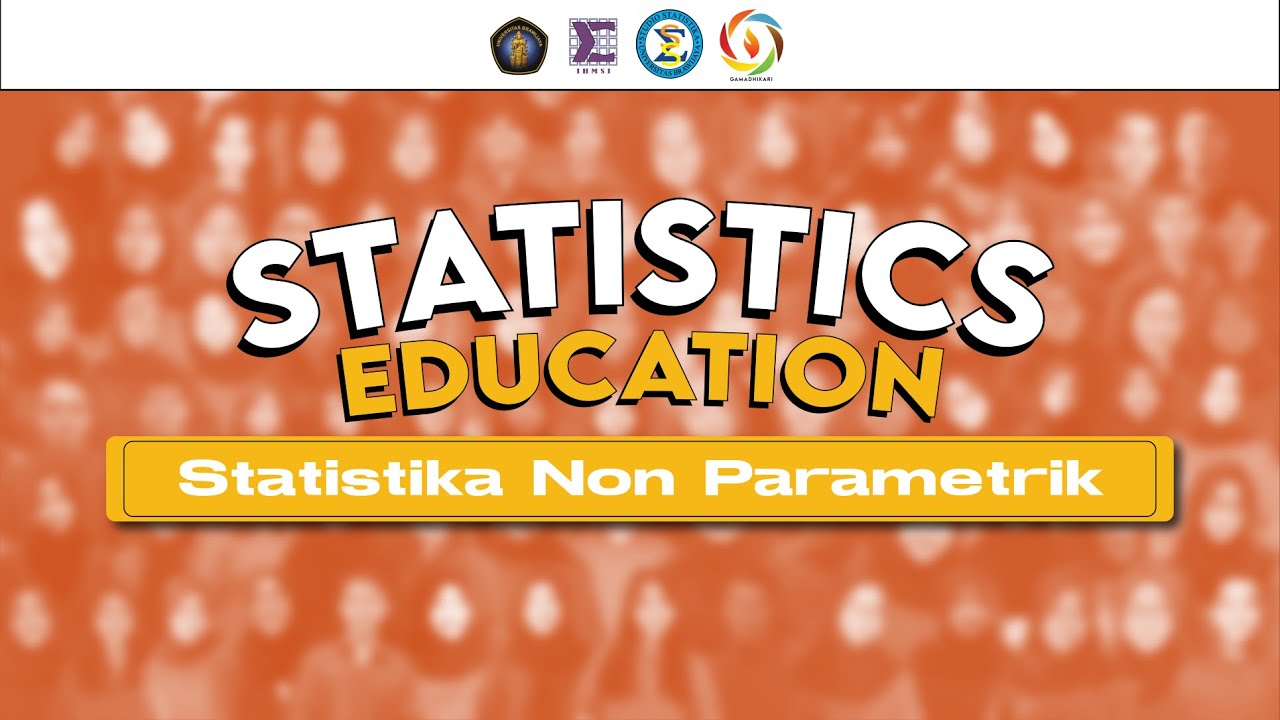Perbedaan Statistika Parametrik dan Non Parametrik
Summary
TLDRThis video script offers an insightful overview of parametric and nonparametric statistics, explaining the conditions under which each type of statistical analysis is appropriate. It covers the importance of data distribution in choosing the right test, with parametric tests used for normally distributed ratio or interval scale data and nonparametric tests for non-normal distributions or ordinal and nominal scales. The speaker also introduces various statistical tests, including t-tests, Wilcoxon, Mann-Whitney, ANOVA, Kruskal-Wallis, and logistic regression, tailored to different data types and research questions. Despite technical difficulties with the camera overheating, the presenter remains dedicated to educating viewers on the versatility of statistical methods, even when data does not meet normal distribution assumptions.
Takeaways
- 📚 The video discusses the topic of statistics, specifically parametric and nonparametric statistics.
- 🔍 Statistics is divided into descriptive and inferential statistics; descriptive for presenting data, and inferential for drawing conclusions through data analysis.
- 📈 Descriptive statistics make data more understandable through tables and graphs, while inferential statistics use analysis methods.
- 📊 Inferential statistical analysis is further divided into parametric and nonparametric methods based on the data's distribution and scale.
- 📉 Parametric statistics are used for ratio and interval scales, requiring normal distribution, while nonparametric statistics are for nominal and ordinal scales without normal distribution.
- 🌡 Examples of interval scale data include body temperature and height, which have absolute zero values and no negative values.
- 🏷️ Nominal scale data are categorical without order or rank, such as religion or gender.
- 🔢 Ordinal scale data are categorized but have a rank or order, like Likert scale responses in surveys.
- 🧐 When data does not follow a normal distribution, nonparametric tests like the Wilcoxon or Mann-Whitney tests are used instead of parametric tests.
- 📝 The video references a book titled 'Dasar Metodologi Penelitian Kuantitatif, Kualitatif, dan Statistika' by Sarmanu published in 2017 as the source material.
- 🌟 The speaker encourages viewers to share references or books for further discussion on nonparametric tests that were not explained in the video.
Q & A
What is the main topic of the video script?
-The main topic of the video script is statistics, specifically focusing on parametric and nonparametric statistics.
What are the two types of statistical analysis mentioned in the script?
-The two types of statistical analysis mentioned are descriptive statistics and inferential statistics.
What is the difference between parametric and nonparametric statistics?
-Parametric statistics are used when the data follows a normal distribution and the scale is ratio or interval. Nonparametric statistics are used when the data does not follow a normal distribution and the scale is nominal or ordinal.
What are the conditions for using parametric tests?
-Parametric tests are used when the data is on a ratio or interval scale and is normally distributed.
What are the conditions for using nonparametric tests?
-Nonparametric tests are used when the data is on a nominal or ordinal scale or when the data does not follow a normal distribution.
What are the types of data scales mentioned in the script?
-The types of data scales mentioned are ratio, interval, nominal, and ordinal.
What is an example of a ratio scale measurement?
-An example of a ratio scale measurement is height or weight, where zero represents an absolute absence of the attribute.
What is an example of an interval scale measurement?
-An example of an interval scale measurement is temperature, which can have negative values but does not have a true zero point.
What is the reference book mentioned in the script?
-The reference book mentioned is 'Dasar Metodologi Penelitian Kuantitatif, Kualitatif dan Statistika' by Sarmanu, published in 2017.
What are some of the statistical tests mentioned in the script for different data scales and distributions?
-Some of the statistical tests mentioned include t-tests, z-tests, Wilcoxon test, Mann-Whitney test, ANOVA, Kruskal-Wallis test, and logistic regression.
What is the purpose of using descriptive statistics?
-The purpose of using descriptive statistics is to present data in a way that is easier to understand, such as through tables and graphs.
What is the purpose of using inferential statistics?
-The purpose of using inferential statistics is to draw conclusions about a population based on sample data using statistical methods of analysis.
What is the script's advice for dealing with data that is not normally distributed?
-The script advises using nonparametric tests when dealing with data that is not normally distributed.
What is the script's suggestion for further learning about nonparametric tests?
-The script suggests discussing and sharing references or books on nonparametric tests to enhance understanding and become a collective learning source.
Outlines

This section is available to paid users only. Please upgrade to access this part.
Upgrade NowMindmap

This section is available to paid users only. Please upgrade to access this part.
Upgrade NowKeywords

This section is available to paid users only. Please upgrade to access this part.
Upgrade NowHighlights

This section is available to paid users only. Please upgrade to access this part.
Upgrade NowTranscripts

This section is available to paid users only. Please upgrade to access this part.
Upgrade NowBrowse More Related Video
5.0 / 5 (0 votes)





